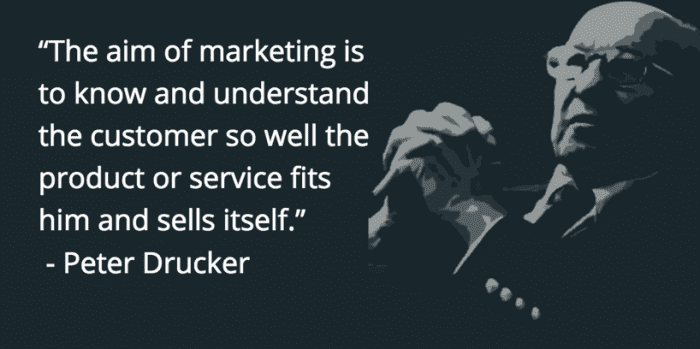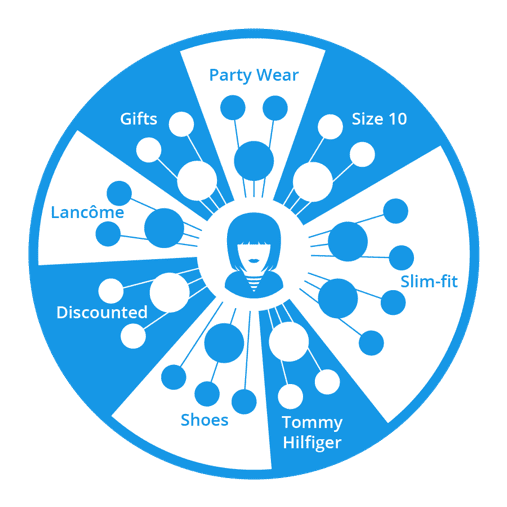The four steps of personalization, and why you should care in the first place
Consumers decide very fast - in a matter of seconds - whether they like your email campaign. Provide something relevant, and you have a happy customer. Miss the target, however, and they instantly delete the email. The importance of personalization in an era of immediate gratification is crucial because consumers are bombarded with emails, almost all of which are off target. Personalisation - tailoring of messages to every person based on their unique tastes and preferences - promises to tackle this matter.
Done right, personalization elevates peoples' lives and promotes engagement by providing content that is tuned into and even anticipates the customer's needs. The benefits to the customer also translate into benefits for the retailer. Personalization can increase aggregate e-commerce revenues by 5% to 15% and boost the efficiency of marketing spend by 10% to 30%.
Download our FREE Resource – Email trends 2018: A visual guide
Review your approach to email marketing by reviewing the latest trends.
Access the
Current Personalization Trends
Being able to move beyond just speaking with each consumer as an individual to understanding their unique tastes and interests is actually where the next level of personalization begins. Retailers have started to realize that, and it's totally altering how they're interacting with customers.

Companies like Spotify, Netflix, Google, Facebook, and Amazon have committed huge resources to create a unique experience for every consumer and have consequently raised customers' relevance expectations. Have a look at your Facebook feed, and whatever you have liked, each friend you've got, each post you make will steadily alter the way that your newsfeed appears, what advertisements you see, etc. Now look at somebody else's newsfeed, and it'll be noticeably different and individualized to their activities. Spotify, Netflix, Facebook, Netflix, and Amazon are all businesses which have cracked the code to personalization. In a sense, all online brands -- including retailers - are following the benchmarks these multi-billion companies have created.
The four steps of personalization
Personalization is a continuing process: most brands are already employing some level of personalization. But even people who still haven't begun already have the data and expertise they will need to start out - whether they realize it or not. It is never too late to begin the personalization journey and start enjoying the boost to ROI and customer engagement. As email marketers seek to evolve their personalization capabilities, four steps result in effective personalization at scale:
Step 1: Mail-merge personalization
At some point you might have received an email like "Hi $firstname$, are you in charge of email marketing at $company$? If so, ..............". This sort of mail-merge personalization is completely legitimate and best suited for brands such as price-led retailers who just want to 'get the message out'. But in a retail environment dominated by Amazon, "mail merge" methods have become increasingly obsolete in the face of a new genre of personalization.
Step 2: Segment-based personalization
The second step of personalization includes the introduction of targeting products and content based on consumer segments. With this strategy, customers are grouped into buckets based on common traits such as RFM, demographic, or other criteria. When segmentation is coupled with recommendations to make targeted offers, retailers will boost their engagement and ROI.
The problem with segmentation is that customers do not conform their tastes to match those of the stereotypical consumer in their segment. And as a result, email campaigns often don't feel very individualized. As Forrester Research says, just 7% of consumers agree with the statement "Email offers are usually well timed with my needs." So, the segmentation strategies that we all learn at university and then implement at work are actually an integral reason why customer satisfaction with email marketing remains low.
Step 3: 'Product-to-product' personalization
Personalization systems based on "people who did X also did Y" are a typical stepping stone for companies seeking to advance their personalization efforts. These type of product-to-product recommendation systems can work well, but this approach relies on product correlation models and therefore is anonymous and doesn't recognize the unique tastes of each specific consumer. Additionally, because this kind of recommendation system depends upon a product-to-product correlation, it's an inherently narrow view based on a single datapoint: personalization based on a single datapoint can entirely miss the mark. Also it can take time to build the correlations, so these systems suffer from a ‘cold start’ problem.
Step 4: Person-first personalization
Person-first personalization begins with understanding that the tastes of each and every consumer, and utilizing that data create personal experiences at scale. The outcome is a substantial reduction in campaign production times, the ability to speak with customers as individuals, and also the capacity to surface highly relevant content to boost conversions and engagement.
Person-first personalization leverages the AI subfields of Natural Language Processing and learning-to-rank to lead the product discovery process. The exciting part is that the AI not only builds a taste profile for each consumer, it also understands the attributes of each product. This personalized ranking approach enables the marketer to merchandise products for each individual consumer. Instead of relying on what “users like you” purchased, person-first personalization looks at the taste profile - real-time and historical - of each consumer to make more accurate recommendations. This has a host of advantages. For one, it's a more personal experience - person-first personalization doesn’t rely on other users—it relies on what that specific consumer is doing, in-the-moment, to make better recommendations and facilitate better product discovery.
And for retailers, it means dispensing with laborious campaign production processes and other expensive (and time-consuming) realities of running an email marketing program. Further, since AI isn’t hampered by what other people bought, it can surface products from deeper in your catalog, showing users items they would never have found paging through endless results in large catalogs.

Person-first personalization utilizes machine learning to deliver these four capabilities:
- Individualization- Customers expect products that match their unique tastes and preferences, however obscure or 'long-tail.' They want to see things related to their interests, however quirky and unique. But repetitive and segment-driven content can turn them off, and in recurring promotional emails, this can be a real issue.
- Freshness & Adaptation. Customers want something fresh and delightful when they open an email. If they keep seeing the same or similar content, they will just delete the email.
- Diversity - Customers need assistance discovering products that are suitable for them individually. A retailer's catalog already has all of the content required to deliver diversity. The secret is to find a way to choose what to display for every customer in a manner that delights them.
- Serendipity & Delight Users want content that's personalized to them, but they also wish to be surprised and delighted. Customers could be regular buyers of a category, but it doesn't mean they only want recommendations from that category. There is a need to explore and find out what else could be of interest to them. If you find a customer's interests and supply them fascinating new things, they'll be delighted.
Conclusion
Marketers in every organization are responsible for creating profitable growth. Rightly, many marketers believe person-first personalization is an essential tool for meeting their revenue and engagement KPIs. Marketers who choose to provide consumers with fresh and relevant experiences at scale will be rewarded not only with better customer engagement but with profitably growing their business too.
On the other hand, retailers who stick with conventional segment-driven campaigns risk gradual obsolescence via what experts refer to as a "boiling frog" process. This is in reference to the fallacy that frogs cannot detect slow increases in temperature and will sit in a saucepan until they slowly boil to death.
The vast majority of email marketers do appreciate that person-first marketing can add huge value both to consumers and to their business. Additionally, whatever can help decrease workload and save time is a boon. Person-first personalization, powered by Machine Learning, enables you to do this in an efficient, reliable, and sophisticated way. These emails are akin to a close friend or a personal shopper saying, “I know you’ll like this” rather than “I know you looked at this once.”
Person-first personalization can strap a rocket to your email revenues, boost customer engagement, and improve performance in all other channels. If I could leave you with one final thought, it would be this: being able to recognize each customer's unique tastes and 'surprise and delight' at scale will always pay dividends. That is why the future of email marketing is brighter than ever before.
Thanks to Peter Duffy for sharing their advice and opinion in this post. Peter is an email marketing and machine learning guy. Enjoys putting disruptive personalization technologies in the hands of marketers. Strong bias for upending stodgy email marketing. Accidentally helped give birth to his son on the kitchen floor. CEO of
Mercanto, the world's first drag-and-drop AI email personalization platform.








